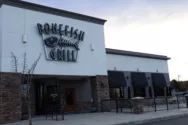
Home » Improved database enables new analytical capabilities for Richland manufacturer
Improved database enables new analytical capabilities for Richland manufacturer

September 13, 2018
It turns out data analysis isn’t just a game for number crunchers. For one Richland manufacturer, it’s also a means of finding new ways to improve medical devices and equipment.
During the nearly 20 years that SIGN Fracture Care International has been treating patients worldwide, the company’s vast network of surgeons has logged more than 120,000 entries into SIGN’s case database, an invaluable tool studied daily by company founder Dr. Lewis Zirkle to better understand the needs of his surgeons and patients.
SIGN manufactures medical-grade nails and screws as well as surgical tools, and trains surgeons around the world to place them to heal patients’ broken bones.
Technology has come a long way in those decades, with automated search engine tools taking the place of cumbersome, manual data forms.
“About a year or so ago, I was investigating tools to make reporting and dashboards easier so that you don’t have to manually create reports,” said Joshua Short, SIGN software developer.
He described his vision as “something the end user can use,” essentially a streamlined search application to enable SIGN surgeons and employees to more easily drill down through the case database to retrieve information.
Short used an open source, business intelligence server product called Metabase to translate SIGN’s case database into an easily searchable format so employees can run analytics on the results of their queries.
Previously, Short explained, much of the database’s contents had been collated into multiple Excel spreadsheets.
“Our data was in this production format; it was in smaller partitions that were only kind of linked together. It was good production design versus good analytic design,” he said.
Metabase can reference these data sources to generate more specific results based on multiple search parameters.
What used to take several minutes to generate results now can be done in a tenth or a hundredth of a second, Short said.
The program also generates visual representations of the data to help users better understand the information.
“It’s the ability to start at any one (point) and be able to link through and analyze anything it’s connected to,” Short said.
Though the choice to design the program in-house has been time-intensive, Short said the specialized, time-saving benefits that the search program will provide more than make up for it.
“It will make people’s jobs easier,” he said. “You can buy data warehousing and other retail options to solve the problem, but it’s more expensive, so we’ve been developing our own open-source approach to save money and add value.”
The improved search tool will enable SIGN engineers to independently ask engineering questions about the data. “Engineers can use their intuition to explore trends and analyze the data they get back. There are interesting paths that only they would know,” Short said. “It’s supposed to be a one-stop shop for production, manufacturing, sales, shipping. We want to consolidate all of our data resources into one enterprise resource planning (tool).”
He explained that improvements to the program’s design are being made as they go.
“There’s a learning curve to teach people how to use the system, and also programming as you go so that the system can respond to the query. You have to have a little know-how about the system and what it can answer,” he said.
Short said understanding the structure of data and what types of queries can be answered by a given system is an important type of literacy for the digital age.
SIGN’s summer intern helped Short get Metabase online by entering data sets into it and programming pathways to answer user queries.
Matthew Moen, a senior biomedical engineering student at Gonzaga University, heard about SIGN from his grandparents who live in the area, and though no internship opportunities were being advertised, he reached out to SIGN’s engineering manager, who welcomed him aboard for the summer.
As Metabase came online, Moen’s duties shifted to performing the first major data mining operation using the new program, which aimed to isolate case data on SIGN’s fin nail surgical implant.
“Dr. Zirkle is very interested in it due to the increase in the number of accidents happening in rural areas where surgeons don’t have the expertise to use a standard SIGN nail,” Moen said. “We’re looking (at the data) to see if it’s equivalent to the standard nail.”
Before Metabase, Zirkle and his team were looking at having to individually analyze some 5,400 fin nail cases to glean information, Moen said. But Metabase was able to narrow it down to 200 cases.
Moen said he also has been using Metabase to analyze the average lifespan of SIGN’s insertion instruments: “How many surgeries can it go through before it breaks? We can increase production and (decrease) surgery time if (surgeons) always have a steady flow of parts.
“We’re looking at info from the past so that we can shape the future,” Moen said.
As SIGN communications specialist Ryan Smith explained, “It’s a great way to verify what we think is happening with our business … with what is actually happening. (Metabase) gives us more confidence as we move forward to make changes.”
The new Metabase-based search tool also will be beneficial to SIGN’s surgeons around the world. Smith said it enables SIGN to “do their own research. This helps us get diverse opinions and approaches, which keeps us learning new things and improving our tools and processes.”
“The data the surgeons can get (from Metabase) can help them better serve the people,” Smith said.
“The goal is to help the people and if the surgeons help us help them, there’s a return and receive that increases the help that we can give,” Moen said.
Smith said the SIGN team hopes that future case database analyses might reveal trends in the data to help them to build predictive models of the types of surgery more likely to be successful under certain conditions. “Tools to help surgeons improve workflow,” he said.
“There’s always something new you can get from the Metabase,” Short said.
SIGN will be announcing the findings of its fin nail study to the 150 surgeons planning to attend the company’s annual conference later this month.
“What we’re learning here gives them practical and applicable things to take back … new techniques to try, or figure out better efficacy, which helps them help more people,” Smith said.
Local News Science & Technology
KEYWORDS september 2018





